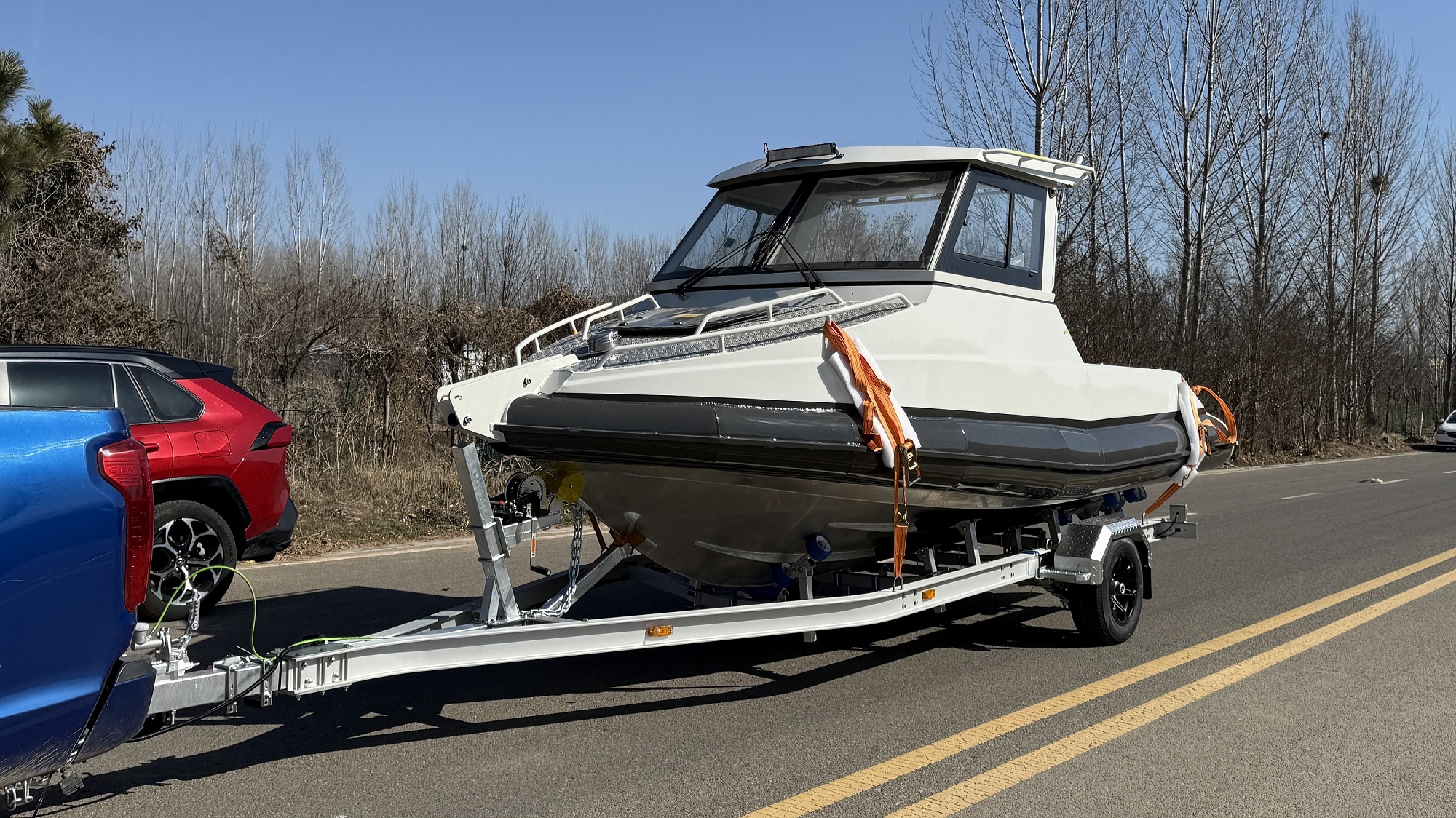The Ultimate Guide to Boat Trailer Maintenance: Keeping Your Investment Afloat
A boat trailer is far more than just a means of transportation; it's a critical piece of equipment that ensures the safety of your valuable boat. Proper maintenance is not just about longevity—it's about safety on the road and ease of use at the ramp. Neglecting your trailer can lead to catastrophic failure, costly repairs, or even an accident.
Follow this comprehensive guide to keep your boat trailer in peak condition.
1. The Post-Launch Ritual: Cleaning is Key
This is the single most important habit you can develop. Saltwater is incredibly corrosive, and even freshwater can contain minerals and pollutants that cause damage.
Rinse Thoroughly: Immediately after retrieving your boat from the water, thoroughly rinse the entire trailer—frame, axles, springs, winch, lights, and tires—with fresh water. Pay special attention to hard-to-reach areas where grime and salt can accumulate.
Use Mild Soap: For general cleaning, use a mild soap and a soft brush. Avoid harsh chemicals that might damage paint or components.
Inspect While Cleaning: Use this time to look for any new scratches, dings, rust spots, or loose components you might have missed.
2. Corrosion: The Silent Killer
Fighting rust is a constant battle on a boat trailer.
Touch-Up Paint: Immediately address any chips or scratches in the paint. Sand the area lightly, apply a primer, and use a matching marine-grade paint to seal the metal from moisture.
Check for Rust: Regularly inspect the entire frame, especially weld points and joints. Surface rust can be sanded and treated. More significant rust requires professional assessment.
Galvanized Trailers: If you have a galvanized trailer, you are already well-protected. However, still inspect for any damage to the galvanized coating.
3. Bearings and Hubs: Avoiding a "Bearing Blowout"
Wheel bearing failure is a common and dangerous cause of trailer accidents.
Repack Regularly: Bearings should be repacked with high-quality marine grease at least once a year, or more often if you trailer frequently or submerge in saltwater.
Buddies System: Consider installing "Bearing Buddies" or similar systems. They allow you to easily add grease, which creates positive pressure to keep water out of the hubs.
Check for Heat: After a trip, carefully feel the hub (be careful, it might be hot). A hub that is significantly hotter than the others may indicate a bearing problem.
Listen for Noise: A rumbling or grinding noise from the wheels is a sign of imminent bearing failure. Address it immediately.
4. Tires and Wheels: Your Connection to the Road
Check Tire Pressure: Always inflate tires to the maximum PSI rating on the sidewall before hitting the road. Under-inflated tires generate excess heat and are a leading cause of blowouts.
Inspect for Wear: Look for cracks, dry rot, bulges, or uneven wear. Remember, trailer tires often age out before they wear out. Replace them every 5-7 years regardless of tread depth.
Spare Tire: Never forget to maintain your spare tire. Ensure it is properly inflated and that you have the correct tools to change a tire on the side of the road.
Lug Nuts: Check lug nut torque with a torque wrench before every trip, following the manufacturer's specifications. They can and do loosen over time.
5. Brakes and Lights (if equipped)
Brakes: If your trailer has surge or electric brakes, test them regularly in a safe area. Listen for grinding noises or feel for pulsing, which indicate worn pads or warped rotors. Saltwater is particularly harsh on brake components. Flush them with fresh water after every saltwater immersion.
Lights: Test all lights—taillights, brake lights, and turn signals—before every trip. Ensure connectors are clean and free of corrosion. A small application of dielectric grease on the connectors can prevent moisture-related issues. Always submerge the trailer with the light connectors disconnected to avoid blowing bulbs.
6. Rollers, Bunks, and Winch
Rollers/Bunks: Inspect rollers for cracking and rot. Ensure they spin freely. Check carpeted bunks for wear, rot, or loose staples. Replace as needed to properly support your hull.
Winch: Inspect the winch strap or cable for fraying, rust, or wear. Lubricate the gears and moving parts according to the manufacturer's instructions. The winch is your primary tool for loading and securing the boat—it must be reliable.
Safety Chain: Ensure the safety chain and transom straps are in good condition without excessive rust or wear.
7. Long-Term Storage
Block it Up: If storing for an extended period, take the weight off the tires by supporting the frame with jack stands. This prevents flat spots from forming on the tires.
Cover it: Store the trailer in a dry, covered place if possible. If not, use a breathable trailer cover to protect it from the sun and elements.
Grease and Lube: Give the trailer a full service—repack bearings, lubricate the winch, and spray moving parts with a lubricant like Fluid Film or Boeshield T-9 to protect them during storage.
Maintenance Checklist Summary
After Every Use: Rinse with fresh water; inspect visually.
Before Every Trip: Check tire pressure; test lights; check lug nut torque; inspect winch strap and safety chains.
Annually (or every 5,000-10,000 miles): Repack wheel bearings; thoroughly inspect brakes, tires, and frame for rust; lubricate all moving parts.
As Needed: Replace tires, bunks, rollers, and lights.
By dedicating a small amount of time to regular maintenance, you ensure that your boat trailer remains a reliable workhorse for years to come, safeguarding your boat and ensuring every journey to and from the water is a safe one.

Corrosion-resistant, affordable trailer